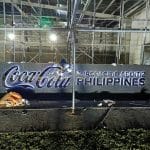Introduction
In an era where sustainability and cultural preservation are increasingly becoming integral to architectural and design projects, M&G Global Ads stands at the forefront of merging these two essential elements. Their recent greenwall projects across the Philippines exemplify this commitment, with installations at the University of Zamboanga, Mendokoro at Mitsukoshi Mall, and Kushizaru at Salcedo in Makati. These projects not only enhance the aesthetic appeal of the spaces but also serve as symbols of the seamless integration of traditional Filipino culture with modern, sustainable practices.
Greenwall at the University of Zamboanga: A Blend of Education and Tradition
The University of Zamboanga, known for its rich cultural heritage and educational excellence, has become the site of a groundbreaking greenwall project that pays homage to the traditional Filipino weaving pattern known as the banig. The banig is a handwoven mat made from palm or sea grass leaves, often used in rural Filipino households. M&G Global Ads has taken this age-old design and reimagined it as a vertical garden, or greenwall, that now adorns one of the university’s prominent buildings.
This greenwall is more than just an aesthetic addition; it represents a fusion of education and tradition. The banig pattern, carefully recreated with various plant species, showcases the resilience and adaptability of Filipino culture. It also serves as a living example of how traditional designs can be preserved and celebrated in contemporary contexts. The greenwall provides a serene, natural environment for students and faculty, promoting mental well-being and environmental awareness within the academic community.
The choice of plants for this project was meticulously planned, ensuring that the greenery would thrive in the local climate while requiring minimal maintenance. The use of native plants not only supports local biodiversity but also reduces the environmental impact of the installation. The greenwall at the University of Zamboanga is a testament to how sustainable practices can be beautifully intertwined with cultural heritage.
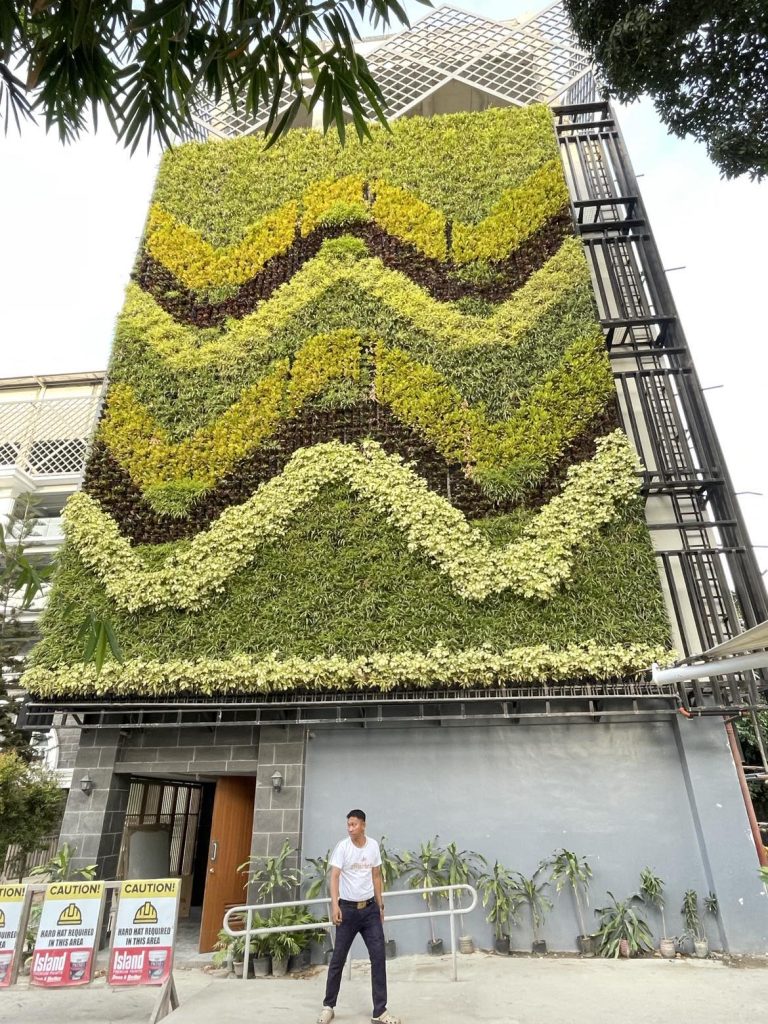
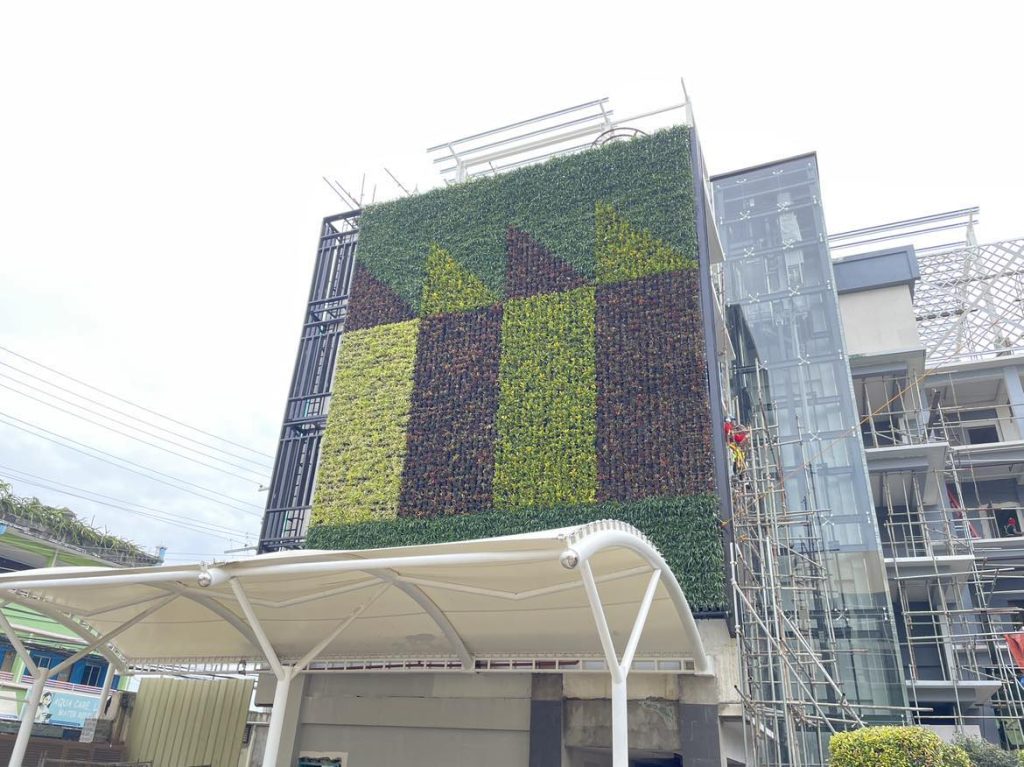
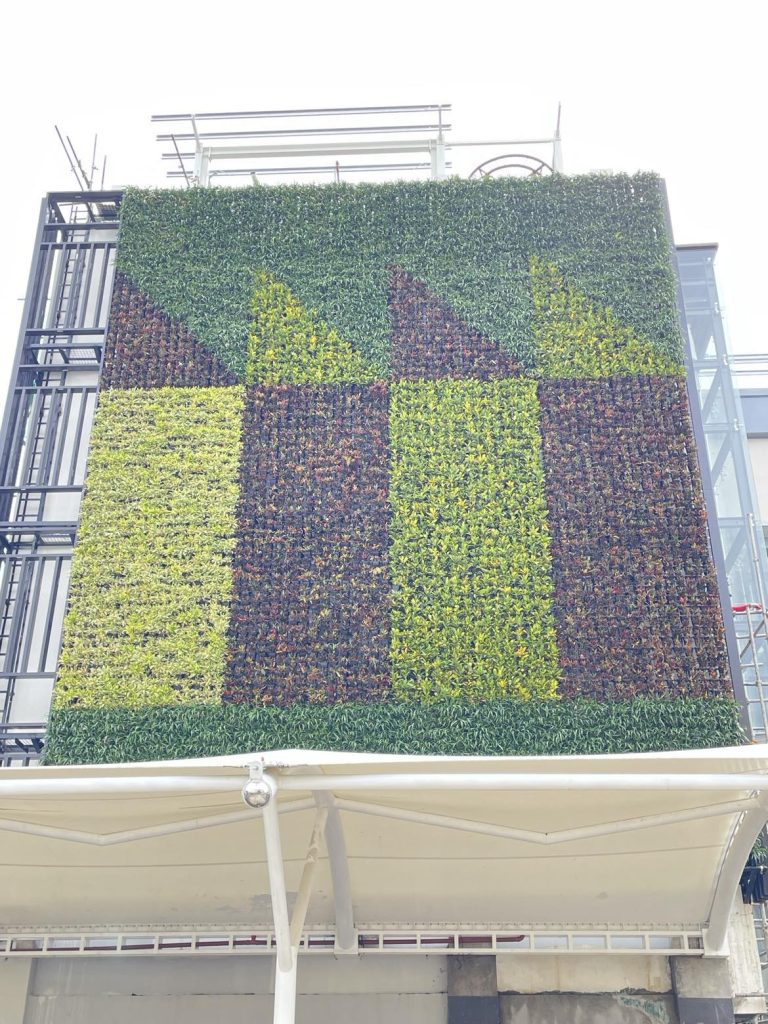

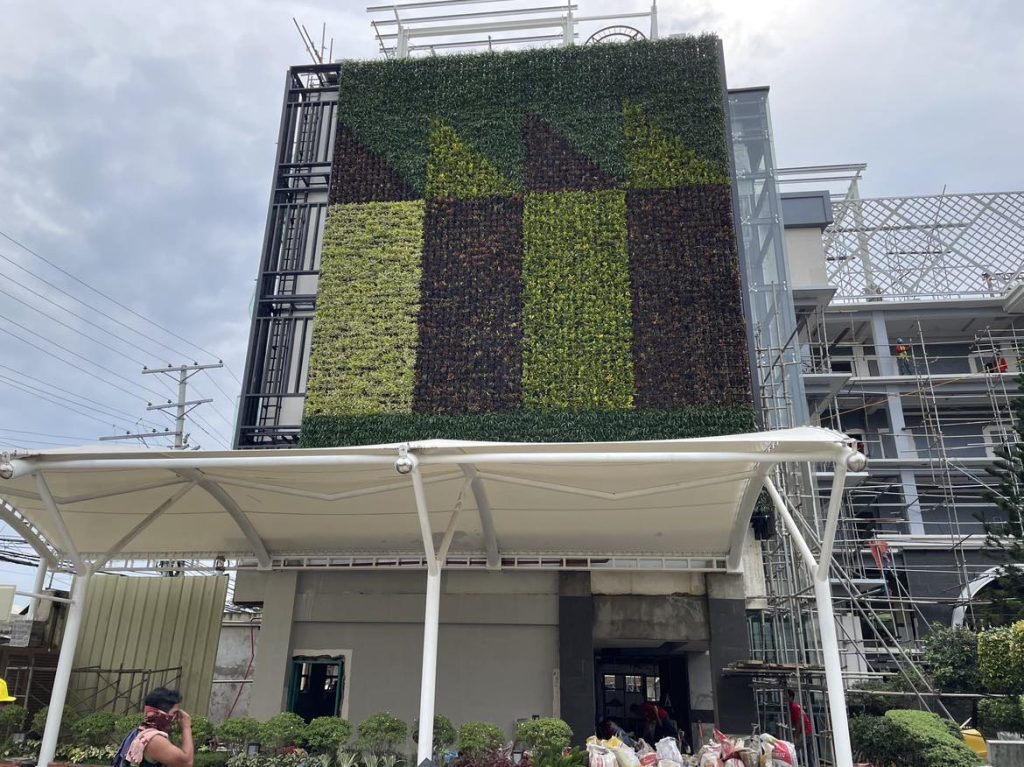
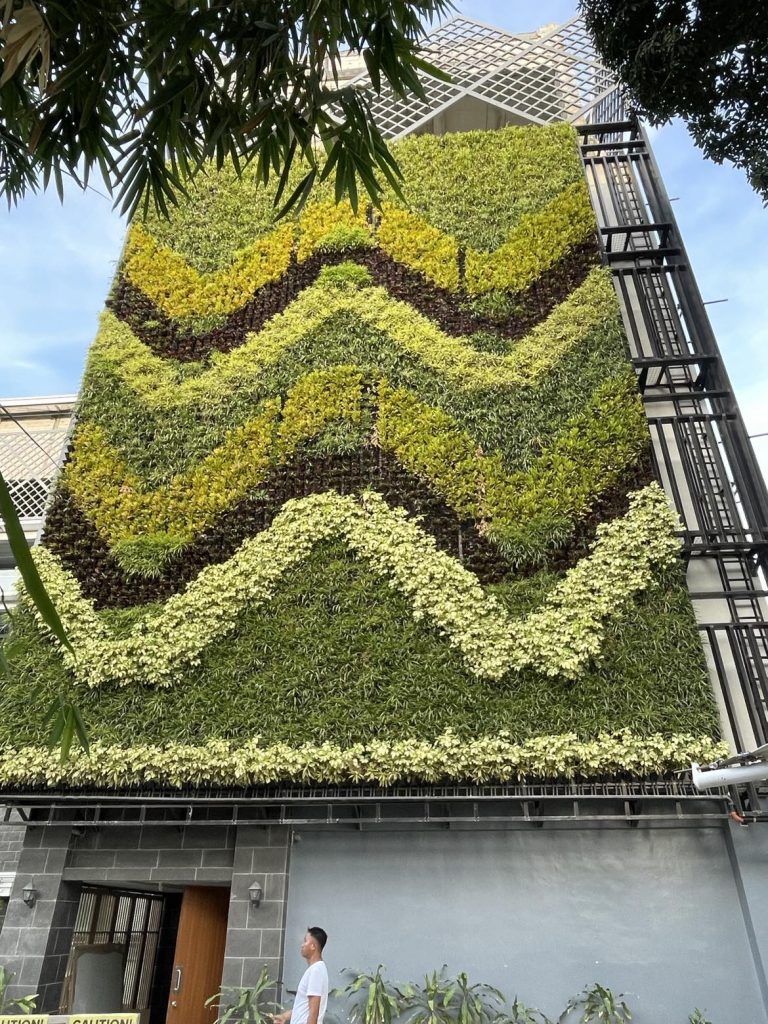
Mendokoro at Mitsukoshi Mall: A Green Oasis Amid Urban Hustle
Mitsukoshi Mall, a bustling hub of modern commerce in the heart of the city, is now home to one of M&G Global Ads’ most visually striking greenwall installations. The greenwall at Mendokoro, a popular ramen restaurant within the mall, brings a touch of nature into the urban environment, creating a refreshing contrast to the fast-paced atmosphere of the mall.
This greenwall is designed to provide an immersive dining experience, where customers can enjoy their meals surrounded by lush greenery. The design incorporates a variety of plant species, chosen for their ability to thrive indoors and contribute to air purification. The installation also includes subtle lighting elements that enhance the natural beauty of the plants, making the greenwall a focal point of the restaurant’s interior.
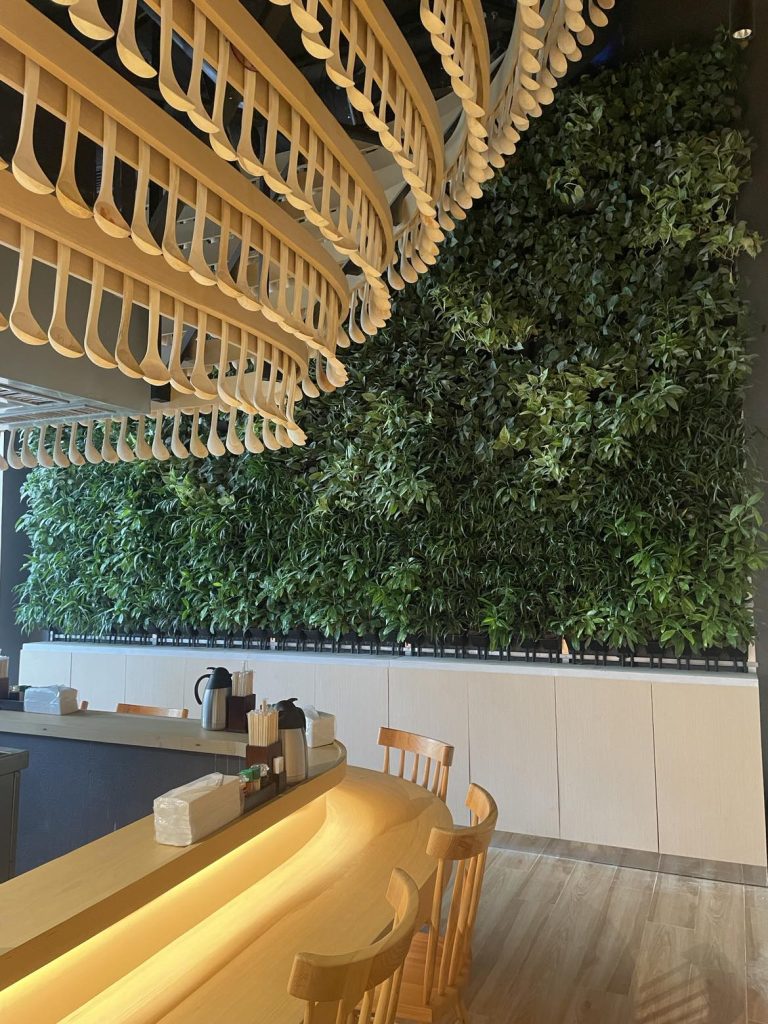
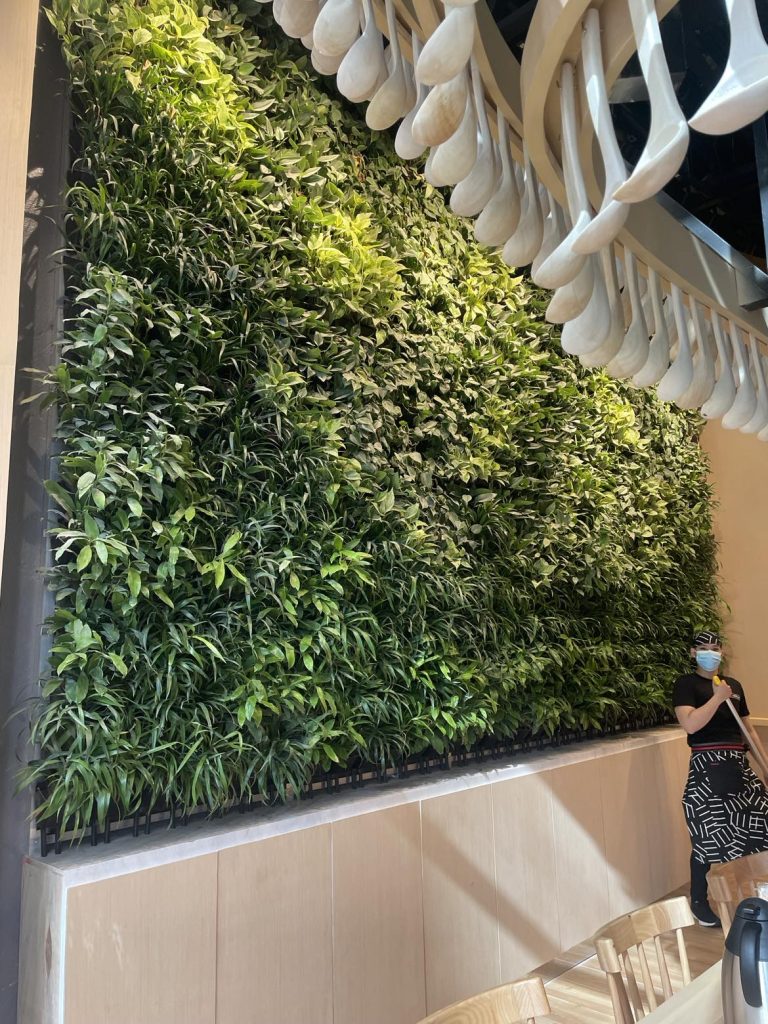
M&G Global Ads worked closely with the designers of Mendokoro to ensure that the greenwall complemented the restaurant’s minimalist aesthetic. The result is a harmonious blend of modern design and natural elements, creating a space that is both calming and invigorating. The greenwall not only enhances the dining experience but also reinforces the restaurant’s commitment to sustainability.
Kushizaru at Salcedo Makati: Elevating Urban Dining with Greenwall Design
Located in the upscale district of Salcedo, Makati, Kushizaru is a contemporary Japanese restaurant known for its exquisite cuisine and stylish interiors. M&G Global Ads was tasked with creating a greenwall that would reflect the restaurant’s modern elegance while also providing a unique visual experience for its patrons.
The greenwall at Kushizaru features a carefully curated selection of plants, arranged to create a dynamic and textured surface that draws the eye. The design incorporates elements of Japanese garden aesthetics, with an emphasis on simplicity, balance, and harmony. The use of greenwalls in urban dining spaces like Kushizaru is part of a growing trend towards incorporating natural elements into city life, offering a respite from the concrete jungle.
In addition to its aesthetic appeal, the greenwall at Kushizaru serves a practical purpose by improving air quality within the restaurant. The plants help to filter out pollutants, creating a healthier indoor environment for both staff and customers. This installation is a prime example of how greenwalls can be used to enhance the overall dining experience while also contributing to environmental sustainability.
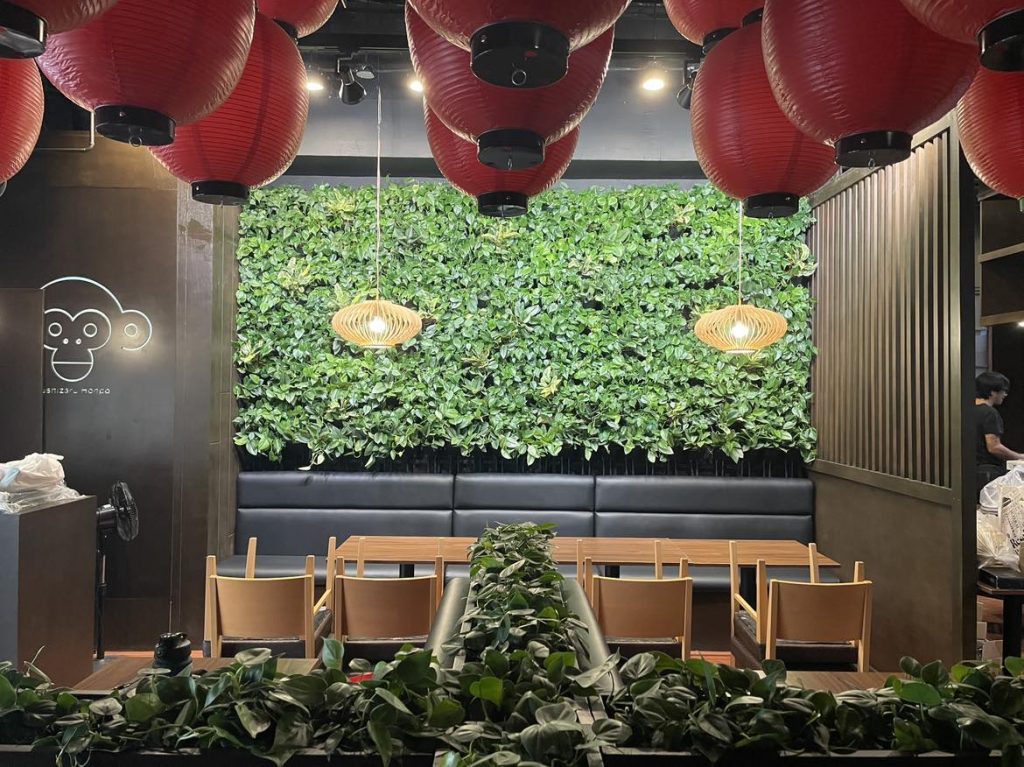
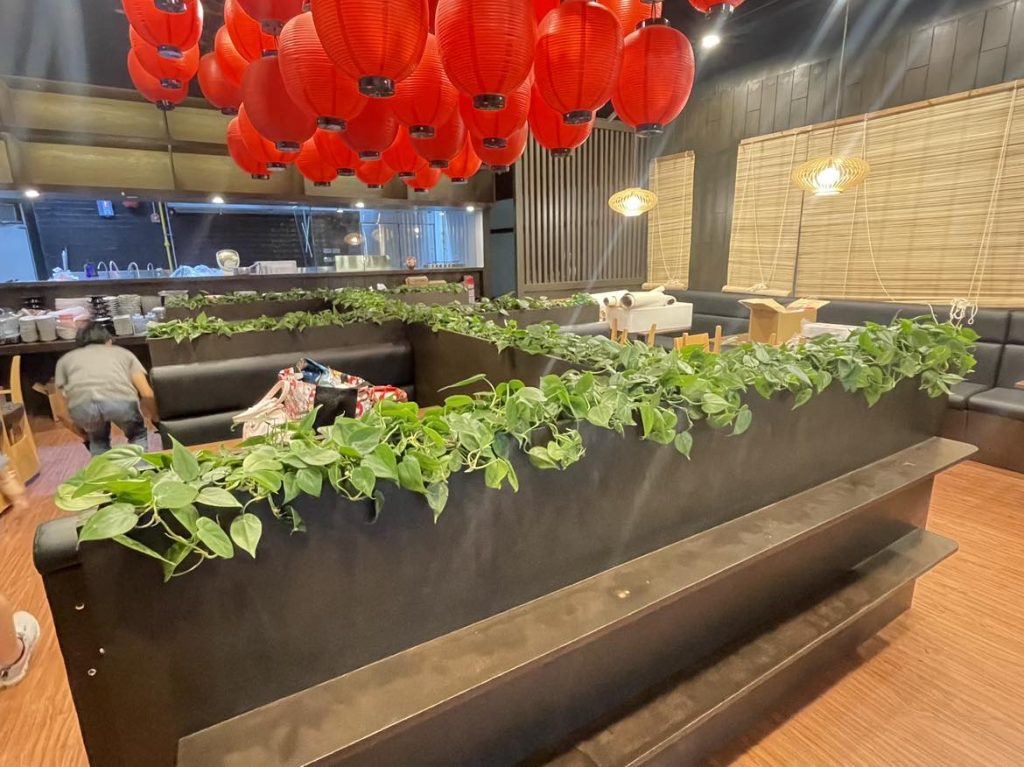
M&G Global Ads: Leading the Way in Greenwall Innovation
M&G Global Ads has established itself as a leader in the field of greenwall design and installation, with a portfolio that includes some of the most iconic greenwalls in the Philippines. Their approach is characterized by a deep respect for both nature and culture, as evidenced by their use of traditional Filipino patterns and sustainable materials in their projects.
The company’s greenwall installations are more than just decorative features; they are living embodiments of the potential for architecture and design to contribute to a more sustainable and culturally rich future. By integrating traditional designs like the banig pattern into modern spaces, M&G Global Ads is helping to preserve Filipino heritage while also promoting environmental responsibility.
Conclusion
The greenwall projects by M&G Global Ads at the University of Zamboanga, Mendokoro at Mitsukoshi Mall, and Kushizaru at Salcedo Makati demonstrate the power of design to bridge the gap between tradition and modernity. These installations not only enhance the visual appeal of the spaces they inhabit but also serve as symbols of sustainability and cultural preservation. As the demand for green architecture continues to grow, M&G Global Ads is poised to lead the way with innovative solutions that honor the past while looking to the future.





